#Behavioral Design
Explore tagged Tumblr posts
Text
Cognition Enclosed: Agency, Attention, and the Architecture of Thought in the Age of Algorithmic Capture
We often think of our thoughts as ours. Photo by Google DeepMind on Pexels.com As private, sovereign, and untouched. But what if that’s no longer true? What if, without realising it, the architecture of our minds has been quietly reshaped by the apps we open first thing in the morning, the feeds that anticipate our desires, the notifications that punctuate our days? I wrote this piece not just…

View On WordPress
#algorithmic governance#Algorithmic Manipulation#anattā#Attention Economy#autonomy#Behavioral Design#Bernard Stiegler#Biopolitics#Buddhist philosophy#capitalism#cognition#Cognitive Capitalism#Cognitive Enclosure#Consciousness Studies#critical theory#Digital Culture#Digital Sociology#epistemology#fight capitalism#Foucault#Human-Computer Interaction#Indigenous Epistemologies#Memory and Technology#Mind and Technology#Neuroplasticity#nirvāṇa#Philosophy#philosophy of mind#Political Philosophy#Raffaello Palandri
1 note
·
View note
Text
The Psychology Behind Great UX
How to Design for Human Behavior?

Understanding human psychology is the foundation of great UX design. By leveraging cognitive science, behavioral patterns, and psychological principles, designers can create intuitive, engaging, and user-friendly experiences. In this blog, we’ll explore how psychology shapes UX and how to apply these insights to build products that resonate with users.
Cognitive Load: Keeping Interfaces Simple
What Is Cognitive Load? Cognitive load refers to the mental effort required to process information. Too much at once can overwhelm users, leading to frustration and abandonment.
How to Reduce It:
Remove unnecessary elements.
Use familiar design patterns (e.g., standard navigation layouts).
Break content into smaller, digestible chunks.
Prioritize key content for your users.
Example: Google’s homepage reduces cognitive load by focusing on one core action—search.
Hick’s Law: Limiting Choices for Faster Decisions
What Is Hick’s Law? This principle states that decision time increases with the number of choices available.
How to Apply It:
Limit visible options.
Use progressive disclosure for complex tasks.
Highlight primary CTAs with visual hierarchy.
Example: Amazon’s streamlined checkout highlights the “Buy Now” button, reducing friction.
Fitts’s Law: Designing for Easy Interaction
What Is Fitts’s Law? Fitts’s Law says the time to reach a target depends on its size and distance—larger, closer elements are easier to interact with.
How to Use It:
Create large, easily tappable buttons.
Place key actions within thumb zones (especially on mobile).
Space out touch targets.
Example: Apple’s iOS keyboard ensures usability by placing frequently used keys in easy-to-reach zones.
The Von Restorff Effect: Make It Pop
What Is It? Also known as the “isolation effect,” it suggests users are more likely to notice and remember distinct elements.
How to Apply It:
Use bold or contrasting colors for CTAs.
Highlight key messages with unique visual treatment.
Make errors visually distinct.
Example: Dropbox’s bright blue CTA pops on a white background, driving conversions.
The Serial Position Effect: Strategic Placement
What Is It? People remember the first and last items in a sequence better than those in the middle.
How to Use It:
Place critical links at the top and bottom of navigation.
Start and end sections with high-impact content.
Order form fields by importance.
Example: E-commerce sites often showcase bestsellers at the beginning and end of product lists for maximum engagement.
The Zeigarnik Effect: Nudging Task Completion
What Is It? People remember incomplete tasks more than completed ones, which motivates them to return and finish them.
How to Apply It:
Use progress indicators on multi-step tasks.
Send follow-up emails for unfinished actions.
Apply gamification like completion meters.
Example: Duolingo uses streaks and progress bars to encourage daily use and course completion.
Emotional Design: Building a Connection
What Is Emotional Design? It involves creating UI/UX that triggers emotional responses—joy, satisfaction, trust.
How to Design Emotionally:
Use friendly microcopy (e.g., Slack’s playful messages).
Include delightful animations and transitions.
Apply color psychology to influence feelings (e.g., blue = trust).
Example: Instagram’s heart animation offers instant emotional feedback, strengthening engagement.
Final Thoughts
UX design isn’t just about visual appeal—it’s about aligning with how users think and feel. By applying psychological principles like Hick’s Law, Fitts’s Law, and emotional design, you create experiences that feel natural, intuitive, and rewarding.
#UX Psychology#Cognitive Load#Hick's Law#Fitts's Law#Emotional Design#Zeigarnik Effect#Von Restorff Effect#Serial Position Effect#Behavioral Design#Human-Centered Design#Psychology in UX#Cognitive Science in Design#User Behavior#UX Principles#Interaction Design#UX Best Practices#User Engagement#Design Psychology#UX Strategy#Microcopy#Gamification in UX#Color Psychology#Intuitive UI#UX Trends
1 note
·
View note
Text
24 Jan 2025 🗣💥
Behavioral Design – Lecture 2
Today in lec, we had to name one thing we are good at and one thing we are bad at. That is when I realized I think I am bad at thinking I am good at anything. So my answer to what I am good at was nothing.
After that, we moved on to status quo bias which has three types. Continuity familiarity and comfort. Then came a bunch of cognitive biases that shape how we think and make decisions.
Anchoring effect is when our decisions are influenced by initial reference points. For example instead of saying I expect a salary of eight to ten say ten to eight because people always focus on the smaller number.
Decoy effect is when a skewed reference point forces an upgrade.
Confirmation bias is when we agree with things that match our existing beliefs. Even algorithms take advantage of this.
Availability heuristic is when we base decisions on what is easiest to recall. This is why trauma sticks with us more than other emotions.
Loss aversion is when we are more afraid of losing something than excited about gaining something.
Overconfidence bias is when we overestimate our abilities based on past success.
Framing effect is when the way something is presented changes our perception. An example is saying half full instead of half empty or pricing things to end in nine.
Sunk cost fallacy is when we keep going with something even if it is not worth it just because we have already invested time energy money or emotion.
Bandwagon effect is when we do things just because others are doing them.
Halo effect is when we assume someone is good at everything just because they are good at one thing. An example is thinking that if A = B and B = C then A must = C.
Attribution bias is when we focus on character instead of context.
Self serving bias is when we justify things in a way that protects our self esteem.
Endowment effect is when we value things more just because we own them. An example is how DIY furniture like from IKEA feels more valuable because we assembled it ourselves.
After this we moved on to choice architecture which is about organizing options to influence behavior without restricting freedom of choice.
It involves
Grabbing attention
Influencing decisions
Facilitating actions and
Sustaining behavior.
CMF stands for color material and finish.
Nudges are default options that make it easier for users to find the primary function.
Visual cues make it easier to identify things.
Social proof is when we trust something more because of reviews or others using it.
Reminders help keep important tasks in mind.
FIN. 🐈
0 notes
Text
Experimentiere in der Weihnachtszeit, um die Aufgaben deiner Kunden besser zu verstehen und Umsätze zu steigern. Mit Behavioral Design und Gutscheinen gewinnst du das Herz deiner Kunden im Weihnachtsgeschäft. Verpasse keine Umsatzchancen – lerne, wie du über Gutscheine und Retouren treue Kunden gewinnst.
#Experimentieren#Weihnachtszeit#Kunden#Umsätze#Behavioral Design#Gutscheine#Herz der Kunden#Weihnachtsgeschäft#Umsatzchancen#Treue Kunden
0 notes
Text
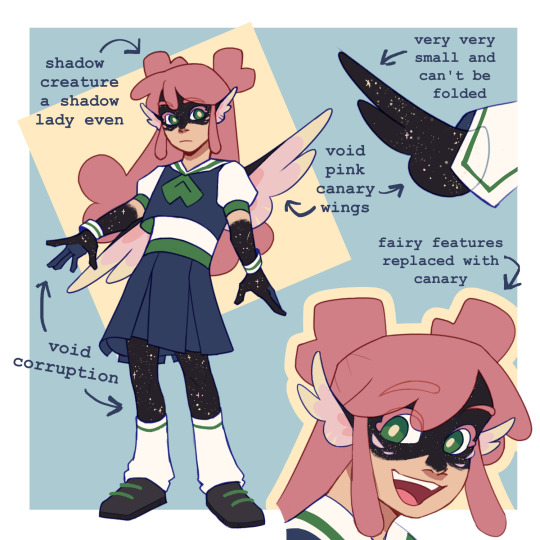
I like to think breaking the canary curse via dying in the void had some effects on Lizzie
#ldshadowlady#wild life smp#secret life smp#technically since she broke the curse there#trafficblr#smth smth breaking the curse means taking it upon yourself- smth smth the miners need a bird so they'll catch another one#I've been wanting to draw pink canary Lizzie ever since she broke the curse and the urge to combine void and shadow creature made me go ins#I wanted to draw BAM or as i would have caption them: Team Canary. But I had too many thoughts on Lizzie design so its just her#Can you tell I am very normal about Lizzie shadowlady? yes i draw her a lot and made her creature but thats normal behavior trust me trust#it was either canary seablings or aquatic seablings w/ whale Lizzie but idk how to work in whale so bird she is#my art#the whole breaking the curse means becoming the curse is very beast!wirt to me but its october so its fitting ig.
2K notes
·
View notes
Text

DID YOU KNOW THAT GLITCH INVENTED LESBIANS
#(ME)#murder drones#murder drones v#serial designation v#lizzy murder drones#lizzy md#vizzy#v x lizzy#murder drones spoilers#dumpster bullshit#mongrel behavior
2K notes
·
View notes
Text
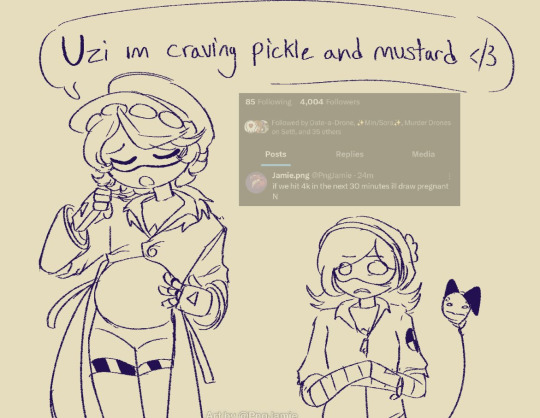

I FUCKING WON
I WILL BE REDRAWING N PREG IN HONOR OF THIS
#MURDER DRONES#SERIAL DESIGNATION N#N PREG#circuitous behavior#i dont care if this is fake#i am overjoyed
618 notes
·
View notes
Text
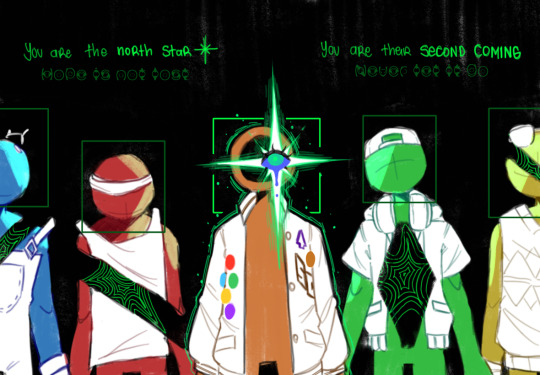
"You are their hope"
I love to associate Orange (or his power? Same thing) to that of a north star ☆
#alan becker#animator vs animation#animation vs minecraft#ava#avm#ava orange#ava second coming#ava green#ava red#ava blue#ava yellow#me and my favs having subtle/outright connection to hope#its a very interestingly tragicly bittersweet concept#the concept of hope itself and it's darker background#yum symbolism#also first time letting you all see a peek of my design of the CG and it's an angst doodle#ofc. typical monneggtart behavior
817 notes
·
View notes
Text
if you expect a driver to be world champion material (ruthless, ravenously ambitious, selfish, psychologically manipulative, killer instinct, able to be cold hearted to hypothermic extremes, competitive to the point of aggression, values winning more than anything and anyone in their lives) and also be a completely likeable person that is entirely a you problem
#f1#formula 1#reality check#it’s not that fucking complicated#this isn’t fiction#this is NOT FICTION#i hate to break it to you but real people are not designed for your perception#REAL PEOPLE ARE NOT DESIGNED FOR YOUR PERCEPTION#fucking hell#don’t like don’t watch#double standards#this is not an excuse for anyone’s behavior#it’s a reminder to lower your expectations#or set realistic expectations in the first place#how can you be a sore loser you’re not even the one losing#why is being a hater such a necessary part of being a fan#unfollow if you wish#this is about lando norris today#and max versrappen in 2021#and nico rosberg in 2016#and sebastian vettel in 2013#do you want me to keep going
546 notes
·
View notes
Text

pov: you're Loop after I learned that I can show you souvenirs
#genuinely spent#so much time#just looking for things that I could show them#because they're such a neat character#silly#and i like their design and i like their behavior and just#loop#in stars and time#isat siffrin#dont think i should tag loop bcoz they're not shown just mentioned
521 notes
·
View notes
Text
This is probably against canon but in my head gods do age, just very very slowly. So Xie Lian who ascended at 17 would look like he's in his mid 20s 800 years later. Why? Because I need Jun Wu to have grey hairs. It doesn't sit right with my soul to have his ancient bitter ass be youthful. I need him to serve that divorced dad midlife crisis realness.
#but in a hot way#some goes for mei nianqing btw his donghua design has no business looking like it's his first rodeo#he's gorgeous of course but come on he had to deal with both bai wuxiang AND teenage Xie Lian it's a miracle he's not bald at this point#jun wu is so special to me tho#yes he's insane but he's going around denying a fourth of his age like a proper old fashioned womana#that's icon behavior if you ask me#heaven official's blessing#tian guan ci fu#tgcf#tgcf headcanon#tgcf spoilers#xie lian#jun wu
165 notes
·
View notes
Text



Finally revealing one of my other blorbos, Niccolo Sonata! A mixed genre troll who poses as a Pop Idol up until world tour
He's a complicated bag, he's half rock half classical, his mother kind of low-key hates him, and his dad does care but is kind of paralyzed with various anxieties that comes with the fact that Niccolo is half classical (worried about his constitution and his wings) and things related to his mother (she doesn't want Niccolo to become like his dad and puts a lot of restrictions on him)
Both of his parents don't really know what to do with him, and he doesn't know what to do with himself.
He has a lot of internalized hatred towards himself and the two sides of his musical families, plus he is a secret third genre (symphonic rock) which he doesn't fully understand. He got picked on a bit in Volcano Rock City, they're a lot rougher than he's used to so he just kind of took it, which is why he looks so roughed up in one pic and the other he says they hate him in VRC
Again he's really complicated even tho he doesn't look it, if you have questions about him lmk
#dreamworks trolls#trolls#trolls 3#trolls oc#trolls world tour#twt#trolls oc Niccolo#his father calls him Nicky#his dad did try to be a good dad and just ended up dropping the ball because he was worried about what niccolos mom would do#shes not a nice person#idk if you can tell#she does care for her son she just cant get over the other half of him#if that makes sense#she believes that even if he isnt full classical she can just make him#which causes him to run away from home at 18#he lived between houses for about 10 yr#and then the rest with his mother due to an incident#which will appear in a different comic#ill share more about his parents later#niccolo is kind of stuck up#and rude to people when hes off stage he doesnt mean to be#it just happens which he does eventually grow out of#his story is one of learning to be better not just for himself but for the people hes around#i think he probably doesnt have many friends until after his growth#tho he does have some its like 3 people who see his potential for growth and or tolerate his bad behavior#i have a few comics of him BUT i need to fix them before i post#cuz i got his wing shape wrong in ALL OF THEM#legit got them wrong in the two comics i have here and they were made 2 sec after i made his design#i had to fix them to post them#idk how i did that but i did smh smh
180 notes
·
View notes
Text
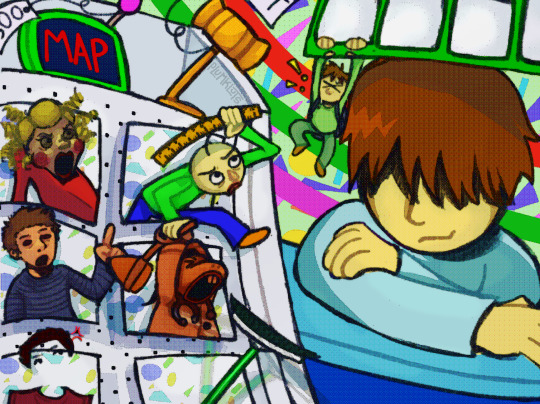
baldi's basics brainrot is real and its winning bru😭😭😭😭
#baldis basics#baldi fanart#baldi#dr reflex#mrs pomp#the principal of the thing#gotta sweep#baldis basics null#player design may or may not have been inspired from basics in behavior#im so normal about this game#ibispaintx
1K notes
·
View notes
Text

The polecat is the most common domesticated ratter and companion animal in the eastern Inner Seaway lands.
Their wild ancestors are less solitary than most mustelids, though do not have particularly complex social structures. Females (usually related) will accumulate in groups of 2-10 individuals (up to 30 in exceptional cases of high prey availability), sharing a territory and den site. Males form their own territories, which will overlap heavily with those of females.
The social hierarchy of these groups is mostly based upon age, with the eldest individuals claiming the best den sites and access to resources and mates. Their social behavior includes allogrooming, sharing of dens, and occasional sharing of prey. Their social bonds are not strongly reinforced, however. They provide no mutual care for young (and dominant females are known to kill the young of low ranking females when prey is scarce), and colonies will readily divide and disperse when their population wholly outstrips prey availability. They often move over open terrain in loose groups as means of defense against predators, but do not hunt cooperatively. Their favored prey is rodents, but they will take birds, small lizards and snakes, and the occasional large insect. They will occasionally coordinate group attacks against large threats (particularly snakes, which threaten their pups within dens).
It is not clear where or when they were domesticated. They likely domesticated themselves in conjunction with early farming practices, preying on the rodents that were attracted to grain stores and gradually being accommodated to and appreciated by human farmers. Wild polecats that could ostensibly be their ancestors can be found on both sides of the Mouth of the seaway, and evidence of domesticated polecats stretches back to prehistory on both sides as well. This would suggest either separate domestication events, or an unrecorded crossing of the Mouth by boats and possible human settlement event during the neolithic period (as most human settlement east of the Inner Seaway occurred in the paleolithic and was a long, slow, roundabout dispersal over land).
Domesticated polecats are frequently kept around as ratters. They are not as efficient as cats over open terrain, but are fairly effective with their ability to fit into confined spaces in pursuit of prey. The domestication process has rendered them more inclined towards close socialization than their wild ancestors, and they readily bond with their owners and with other unrelated polecats. Feral colonies are most distinct from wild colonies in that they form tighter social bonds and practice extensive alloparenting, with mothers often allowing unrelated young in the same colony to suckle, and sometimes even adopting orphans. Feral polecats have interbred with and/or displaced wild ones in many parts of their range, and true wild polecats are increasingly rare.
The Burri deity Tingari is the goddess of granaries, and she is often depicted as a polecat, or with one in each hand. Polecat figurines are placed in granaries to confer the goddess' protection from rodents, insects, rot and disease. This practice has been naturalized in many places formerly colonized by Imperial Bur, though often as a general ward against grain pestilence or integrated into native religious conventions rather than as representations of the Burri god.
#creatures#Should probably give them an actual name instead of just 'polecat' because they are pretty different from the various real-world animals#called 'polecats' and are not the same thing as ferrets (which are domesticated european polecats)#Like they're BASICALLY ferrets in form but not behaviorally#Though the polecat name fits into my grand design of having as many animals called 'cats' that are not actually cats as possible
148 notes
·
View notes
Text
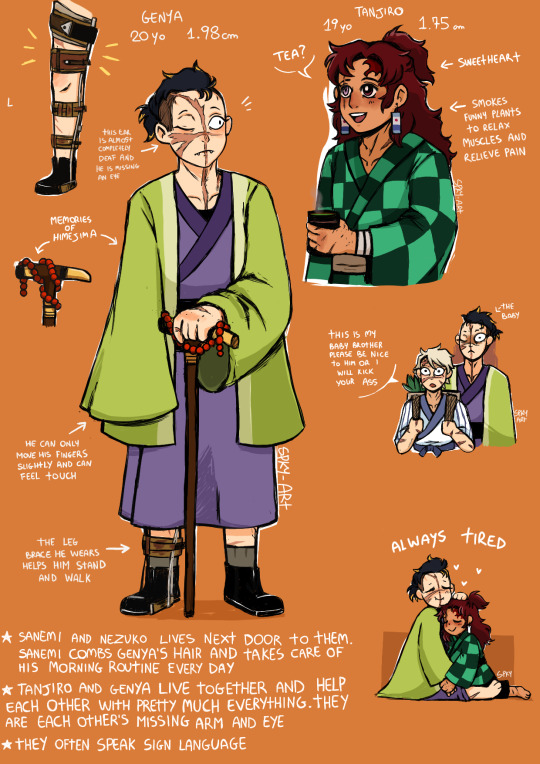
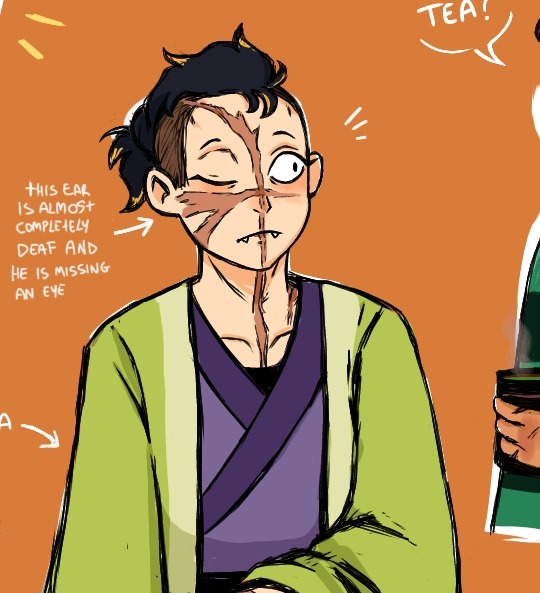
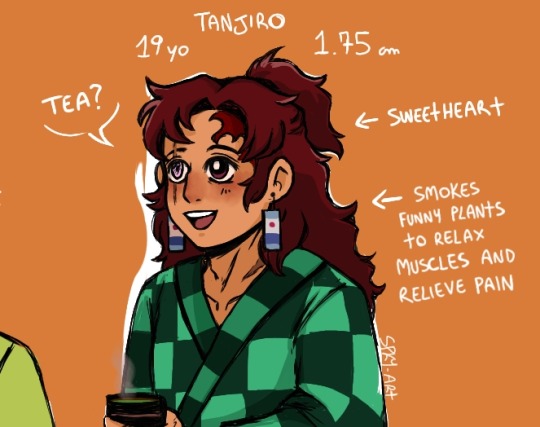
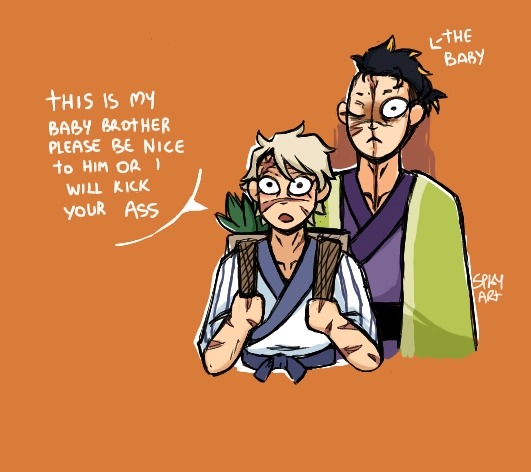

au where genya survived the final battle and its now living his best life and everyone cares him
#I TOLD YOU WILL SEE AND HERE WE ARE#this au is the sweetest thing my teeth are falling#i am pretty much happy with genya design#anyway he was able to regenerate his body and keep some function bc all the demons he ate affected his regenerstion process for good#sanemi is trying his best but he and tanjiro are always bickering over the dumbest thing#look at my man showing big brother behavior and calling his giant 20 yo brother baby#i do the same with mine tbh#kimetsu no yaiba#demon slayer#kny#tanjiro kamado#tanjiro kny#demon slayer tanjiro#kimetsu tanjiro#tanjirou#genya kny#genya shinazugawa#kimetsu genya#genya#gentan#sanemi kny#sanemi shinaguzawa#writing took me more time than the whole drawing#tanjiro outgrow his old haori and asked his sister to make another identical one bc he could die without checkered patterns
1K notes
·
View notes
Text

girlfriends
#genuinely can’t believe i’ve never posted art of the two of them on tumblr yet.i've failed as a vizzy shipper#murder drones#murder drones fanart#vizzy#v x lizzy#pink lemonade#serial designation v#v murder drones#sd v#lizzy murder drones#lizzy md#alley scribbles#mongrel behavior
617 notes
·
View notes